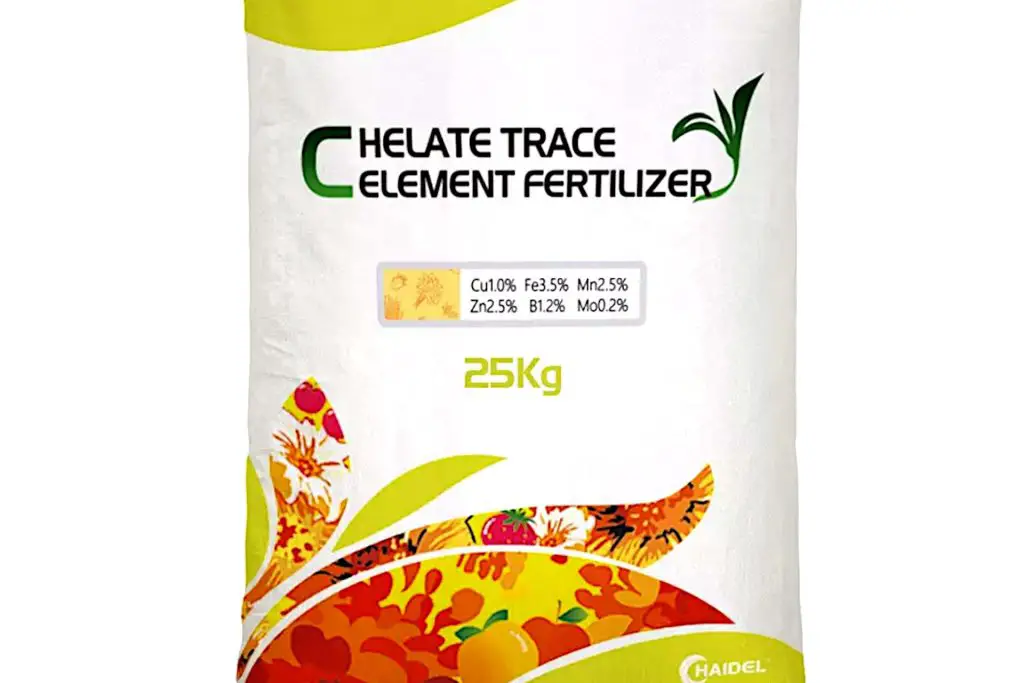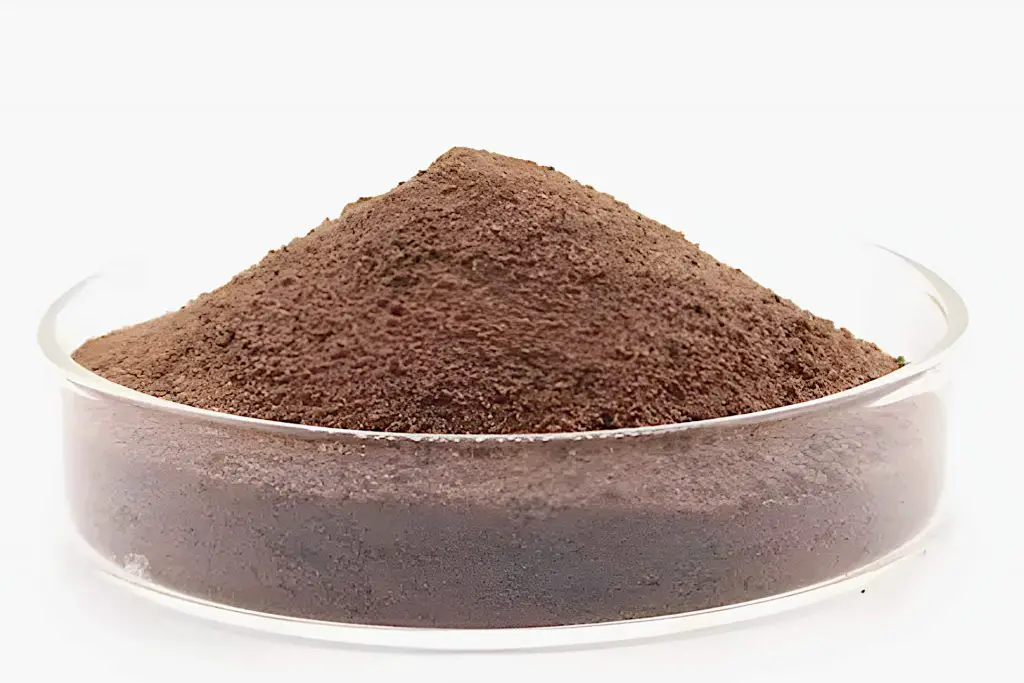Making Your Grass a Deeper, Richer Green – When to Apply Iron to Your Lawn and When You Shouldn’t
If you want to make your lawn a deeper, richer shade of green then adding iron to your soil is the best way of achieving this. One of the reasons that the greens of your lawn may appear washed out or have a yellowish hue is because of an iron deficiency in your soil.
We will look at how, and when to apply iron to your lawn, and when not to. We will also go over the reasons why iron is important for healthy growth, the ancillary benefits of adding iron, and the dangers of adding too much iron to your lawn. Getting the right amount of iron into your lawn will help your grass achieve a healthier and more vibrant green color that your neighbors will envy.
Iron is essential for lawn health as it helps the grass to produce chlorophyll – the molecule for the pigment that gives plants their green color. Chlorophyll is important as it helps the plant to convert sunlight into energy through photosynthesis. Iron is also necessary for the plant to create new cells, which is essential for growth.
The Benefits Of Adding Iron To Your Lawn

One of the benefits of adding iron to your lawn is that it can help to promote a deeper, richer green color, improving its appearance. Iron can also help to thicken your lawn, making it less likely to succumb to diseases, insects, and weeds.
Iron Amendments for lawns
Iron is essential for the healthy growth of plants. It helps them absorb nutrients from the air and water they receive through their roots. The presence of iron also promotes the development of chlorophyll, which is responsible for making grass blades green. This makes iron a vital component of any plant’s life cycle.
In order to make sure that your grass gets enough iron, it is necessary to add some to the soil where it grows. You can do this by adding iron-rich fertilizers to your garden. However, there are other ways to get iron into your grass. One way is to apply iron directly to the soil. Another method is to spray iron onto the grass itself.
How Does Iron Work in Helping your Lawn
The primary reason for adding iron to a lawn is that it helps the grass produce the optimal amount of chlorophyll, which is the pigment that provides the green color in the grass blade. Iron, though, is not a substitute for lime, which also can aid in the production of chlorophyll, but is alkaline in nature and primarily used for reducing the acidity of the soil as adequate iron is crucial for the process.
When you add iron to your lawn, it will start absorbing the iron right away. As soon as the iron enters the root system of the grass, it starts producing chlorophyll. This process of chlorophyll production takes place over several weeks. During this period, the grass absorbs the iron and begins to grow faster. Once the chlorophyll has been produced, the grass becomes greener and healthier looking.
Why Is Iron Important For Grass?
There are many reasons why iron is so important for grass. First as we have mentioned, it is necessary for the production of chlorophyll. Without chlorophyll, grass cannot become green. Secondly, iron is needed for the formation of proteins. These proteins are used by the grass to build up cell walls. They also help the grass to resist disease and insects. Finally, iron is required for the proper functioning of photosynthesis. Photosynthesis is the process that allows grass to convert sunlight into energy.
It is possible to see how much iron is present in your lawn’s soil by simply taking a look around your lawn. If your grass appears dull and lifeless, chances are that it lacks iron. In such cases, it is best to apply iron to your lawn.

How To Add Iron To Your Lawn
It is recommended that you apply iron to your lawn only after the grass has had sufficient time to develop properly. That means that you should wait until the grass has grown well and is fully established before applying iron to your lawn. There are two different methods that you can use to apply iron to your grass:
Spray application. Spray application involves spraying iron on the grass. This method is usually done during spring or fall. It is ideal if you have a large area of grass that needs iron and gives an immediate boot to the soil. Spraying iron on your lawn is easy to do as it can come pre mixed or as a powder that you diloute with water.
Direct application. The direct application involves applying iron directly to the soil where the grass grows. This method is ideal if you want to give your grass a slower infusion of iron. You can either buy iron fertilizer or you can make your own using iron oxide and sulfuric acid.
Different Types of Iron Supplements for Your Lawn
Iron fertilizer contains iron sulfate. The advantage of this type of fertilizer is that it is very effective at providing iron to your grass. On the other hand, iron sulfate is quite expensive.
Organic Iron Fertilizers
Organic iron fertilizers are made from natural ingredients and are comprised of organic iron sources, such as iron phosphate and iron citrate. Organic iron fertilizers are less expensive than iron sulfate fertilizers. However, they are not as effective as iron sulfates.
They break down at a slower rate than synthetic fertilizers and thus can be considered slow release. This means, they take longer to provide iron to your grass but feed iron into the roots over a longer period.
If you decide to purchase organic iron supplements for your lawn, you will find them at most local nurseries. Organic iron fertilizers are made from natural ingredients. The main ingredient in these products is iron sulfate. Other common ingredients include potassium chloride, magnesium sulfate, calcium carbonate, and ammonium phosphate.
Iron Oxide – Make Your Own Iron Fertilizer
If you like to produce your own soil amendments you can also make your own iron oxide fertilizer. Iron oxide is a compound that contains both iron and oxygen. It is available in liquid form and comes in various concentrations.
Beginning with the process of seed germination and continuing all the way through the process of locating a plant’s reserve resources, iron oxide nanoparticles play an essential function in the healthy development and increased production of plants.[1]
You can mix iron oxide with other nutrients like phosphorus, nitrogen, and zinc when creating your fertilizer mix
Synthetic Iron Fertilizers
If you’re looking for a quick way to improve your lawn, synthetic iron fertilizers are an option to consider. They’re generally inexpensive and can be applied quickly, either by spraying or in granule form.
Synthetic iron fertilizers tend to be far more concentrated than their organic counterparts. They contain higher levels of iron and lower levels of other nutrients, so it is important to be careful when using synthetic iron fertilizers, as too much can lead to grass that turns gray. This type of fertilizer can come in the form of pellets, granules or liquid
In addition, if using the liquid option you need to mask for overspray as it can also leave stains on pathways or concrete drives adjacent to a lawn. So be careful when applying them to avoid both overspray and over-application.
Should You Use Liquid or Granular Iron Fertilizer

The best way to determine which type of iron supplement to use for your lawn is to consider the needs of your lawn and the amount of time you have to care for it. If you have a large lawn that requires a lot of iron, then a granular iron fertilizer may be the best option.
Granular iron fertilizers are easier to spread over a large area and can provide a more even coverage. However, if you have a smaller lawn or if you are short on time, then a liquid iron fertilizer may be a better option.
Liquid iron fertilizers are easier to apply and can be more quickly absorbed by the grass. One of the most common is chelated iron. Chelated iron fertilizer is usually combined with various other minerals. It is often used by gardeners because it stops the iron from giving a red tinge to your soil or staining the grass blades.
How Much Iron is Needed?
The amount will largely be dictated by the soil test that you conduct but in general even for lawns that have a large iron deficiency around 0.7 ounces to 1 ounce of iron per 1000 sq feet. It is always important to follow the manufacturer’s application instructions to avoid adding too much iron to the soil.
How to Apply Iron to Yor Lawn
This will depend if you are using the iron fertilizer in liquid or granular form.
How to Apply Liquid Iron Fertilizer to your Lawn
To use iron fertilizer in spray form, mix the desired amount of fertilizer with water in a garden hose-end sprayer or backpack pump sprayer. Be sure to follow the fertilizer manufacturer’s directions for proper mixing ratios.
Spray the mixture evenly over the lawn, making sure to evenly coat the blades of grass. Take care not to oversaturate the grass. and water the lawn lightly immediately after application to help the fertilizer absorb into the soil. Repeat this process as necessary to maintain a healthy lawn.
How to Apply Granular Iron Fertilizer to your Lawn
You may apply iron to your lawn in a variety of ways, such as utilizing drop spreaders, rotary spreaders, or the more traditional technique of broadcasting. Each of these approaches has its own advantages and disadvantages. The dimensions of your garden should guide your decision on the kind of spreader you choose. Make sure you read the directions that the manufacturer has provided for your particular spreader.
Drop-Style Spreaders
A drop-style spreader is a piece of portable equipment that is used to disperse amendments across the surface of the grass in a uniform and consistent manner. It has a revolving blade that distributes the iron fertilizer granules over the ground and a hopper that is filled with granules or pellets. Iron fertilizer can be effectively applied to quite large areas using drop-style spreaders. They are efficient if not somewhat limited devices but serves this purpose well.
Rotary Spreaders
Rotary spreaders are quite similar to drop-style spreaders; the primary difference between the two types of spreaders is that rotary spreaders have a wheeled chassis rather than a handheld device. These devices are designed to cover bigger regions in a more expedient and effective manner.
However, they do call for a certain level of skill to make the best use of the spreader. The dimensions of your garden should guide your decision on the kind of spreader you choose.
Application Method For Using Drop Style or Rotary Spreaders
In order to apply the iron fertilizer, you will need to adjust the spreader’s rate to the amount that is advised for your particular kind of soil and tailor the spread pattern’s breadth to the dimensions of your grass. The best place to start spreading the iron fertilizer on your lawn is at one of the corners, and then work your way out.
Make sure that there is at least a 6-inch overlap between each pass (15 cm). After finishing one pass, you should circle back around the lawn and finish it off with a second pass that is perpendicular to the first.
Lightly water the area of the lawn you applied the fertilizer immediately after application to help the fertilizer absorb into the soil
Broadcast Spreader
If you have an exceptionally large lawn or struggle with mobility, then the use of a broadcast spreader attached to a garden tractor can get the job done quickly and efficiently.
In order to use a broadcast spreader to distribute iron fertilizer granules to your lawn, you must first calibrate the spreader in accordance with the instructions provided by the manufacturer. After that, load the spreader with iron fertilizer, and then adjust the rate of application until it satisfies your needs.
When ready, take your time and go carefully over your grass as you distribute the granules or pellets in a sweeping manner. Be careful to stay away from the areas that you have previously treated by not maneuvering over them. Readjust the spreader as necessary in the event that you see any inconsistencies in the application.
As with the drop spreader lightly water the area of the lawn you have applied the fertilizer immediately after application to help the fertilizer absorb into the soil. When this is done the iron fertilizer it will immediately begin to break down and gradually feed itself into the earth.
The broadcast spreaders are simple to use and need nothing in the way of upkeep. On the other hand, as compared to other methods for adding iron fertilizer to your lawn, they are not as accurate and can cause overspill onto concrete, pathways, and into beds.
What is the Best Time Of Year to Add Iron to Your Lawn
Iron fertilizer is best applied to your lawn in the early spring before new growth develops. For the most effective results, you should avoid using it when temperatures are likely to be in excess of 80°F. This is because higher temperatures decrease the efficiency with which the grass can absorb the iron, making the application far less effective.
Iron can also be applied during the fall. It is particularly useful at helping deal with moss that may have accumulated over the summer months. You should apply again over the first part of spring or when temperatures should be above 40°F, as you should only ever apply iron when the lawn is actively growing. Doing this will prevent the moss from returning in the spring.
Can Add Too Much Iron to Your Lawn?

It is very important not to add too much iron to your lawn. Doing can damage or even destroy the grass. This is because, when there is an excess of iron in your lawn, the grass may become so dark green that it seems practically black.
The reason for this is that the process of chlorophyll synthesis and storage is disrupted when there is an excess of iron. If this circumstance continues for an extended period of time, the grass on the lawn will eventually perish.
Summary: When to Apply Iron to Your Lawn
You should only apply iron to a lawn when the temperature is between 40°F and 80°F. This is because the grass needs to still be growing for the roots to take up the nutrient whilst elevated heat can make the take-up less, or completely ineffectual. As such, spring and fall are likely to be the best periods to add iron.
Adding iron to your lawn is one of the most important things that you can do for your grass. By doing so, you will be able to increase its growth rate and improve its appearance.
The good thing is that it is a relatively easy process to apply iron to a lawn with a multitude of options available for buying the iron fertilizer and putting it down. The only thing to watch for, bar overspray, is not to add too much iron as this can have a devastating effect on your lawn. Soil testing and following the manufacturer’s instructions should prevent this
Notes:
[1] Journal of Plant Growth Regulation volume 41, Haydar, M.S., Ghosh, S. & Mandal, P.: Application of Iron Oxide Nanoparticles as Micronutrient Fertilizer in Mulberry Propagation
